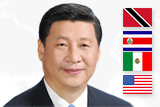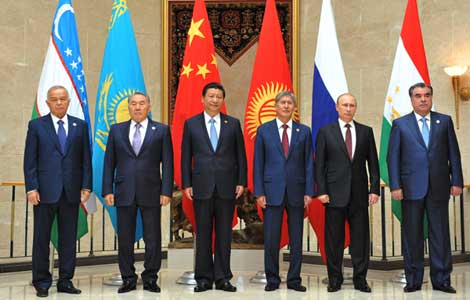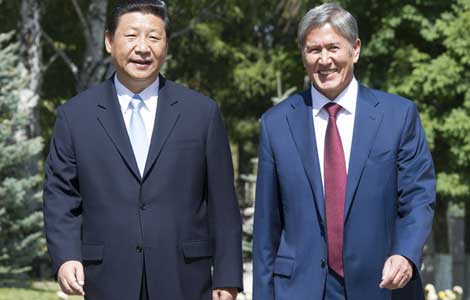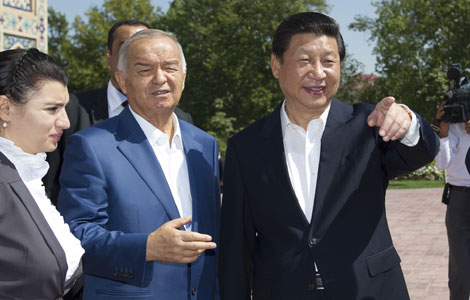Have confidence in restructuring
Updated: 2013-08-20 07:53
By Yu Xiang (China Daily)
|
|||||||||
A tapering off and rebalancing of China's economy will have benefits for the US as well as ensuring domestic stability
Concerns about the outlook for the Chinese economy have mounted, particularly given the apparent tolerance of China to slowing growth. Some US media and Wall Street institutions deem the Chinese economy's slowdown as a "black swan" event. But objectively speaking, the overreaction to China's slowdown and the growing pessimistic opinions are partly due to Wall Street's speculation and partly due to the lack of a clear understanding of China's economy.
The world economy is still in recovery. Influenced by the decline of external demand and domestic economic adjustment, China's slowdown is understandable and predictable. It is not a black swan event.
Europe is still far away from stepping out of the sovereign debt crisis and growing imbalances within the eurozone are increasing rather than decreasing. In Japan, "Abenomics" has achieved some results during the first months of 2013, but its sustainability is being widely questioned, and the potential for unwanted side effects are very big. Meanwhile the emerging markets are expanding at their lowest speeds in a decade.
However, China's slowdown is under control. The slowdown is an initiative to adjust the country's economic structure, which is quite different from the European slowdown. Premier Li Keqiang has emphasized the government's commitment to maintaining economic stability, and the growth target set by the government is real and dependable.
The government has recently announced a series of micro stimulus plans that signify the government has the fiscal and monetary strength both to absorb losses and to stimulate the economy if necessary: The Ministry of Finance has reduced the tax burden on small and micro enterprises starting Aug 1, which represents tax cuts of nearly 30 billion yuan ($4.86 billion) a year; in July, the State Council decided to increase railway investment by 3.3 trillion yuan, an increase of 0.5 trillion yuan from the planned 2.8 trillion yuan during the 12th Five-Year Plan period (2011-15); and the Ministry of Environmental Protection plans to input 1.7 trillion yuan to tackle air and water pollution.
More importantly, China's economy has not run out of steam. First, China is still a developing country and still has the potential of "backwardness". Over the past 10 years, China has gradually shifted toward the higher end of the industrial chain, from the production of low-end products to the manufacturing of electronic equipment and high-tech products. Though production costs have begun to rise, China can transfer industries to the less-developed western regions. In addition, the continuously pushing-forward of political reform will release huge reform bonuses.
Second, urbanization has great potential for promoting economic growth. China's urbanization rate is still low, officially 52.6 percent in 2012, equivalent to the early 1970s in Japan. China's urbanization will accelerate to 75 percent over the next decade, boosting domestic consumption.
Third, China still enjoys a demographic advantage. China's huge population means a huge market and the large proportion of young people in the population represents economic potential. The proportion of the population below 24 years of age in China is 32.6 percent, while it is 23.1 percent in Japan.
Double-digit economic growth is over, but China's long-term picture looks reasonably bright. In the coming years, China's economic growth rate will be less than 8 percent, but it will be more stable. China is entering a stage of "new normality", which will be characterized initially by a lower growth rate, increased employment, adjustments to the economic structure, and more emphasis on people's happiness.
It is undeniable that China's economic slowdown will inflict short-term pain on the world economy including the United States. But as US Vice-President Joe Biden said in a Bloomberg Television interview, it will not derail the US' recovery. The US' exposure to Chinese demand is limited. Goldman Sachs calculates that companies in the Standard & Poor's 500 directly attribute just 5 percent of revenue to emerging markets, and just 1 percent to China. Weighing the pros and cons, the Chinese economic tapering off will be of more good than harm to the US.
First, a stabilized China is more favorable for the US and the world. In the past decades, pursuing rapid growth as a priority has incurred lots of problems: environmental degradation, rocketing real estate prices, a shortage of medical care, and a widening income gap. If these problems are not solved, there will be more social unrest.
Second, the US is worried that China's economic strength will be accompanied by global political aspirations that threaten the US' hegemony. China's economic slowdown will ease the strategic anxiety of the US.
Third, from an economic point of view, setting China's economic setting on a healthier, long-term trajectory is a good thing. China's slowdown is helping to lower international commodity prices, reducing imported inflation pressures in the US. The S&P's GSCI Spot Index, a gauge of 24 raw materials, lost 4.7 percent in April, the most since a 13 percent plunge in May of last year.
As Stephen S. Roach, former chairman of Morgan Stanley Asia and the firm's chief economist, wrote in his article "Long Live China's Slowdown," China's slowdown means China will reduce the amount of purchasing dollar-based assets such as US Treasury bills. As a result, the US will have to think carefully about its economic model, how to fund its budget deficit and on what terms.
In the long term, a reformed and rebalanced Chinese economy will be more favorable for US exports. Rising into the ranks of middle-income countries will give China more financial resources to protect intellectual property rights, cybersecurity and other issues that the US is much concerned about.
Finally, a tapering off and rebalancing of China's economy will be less risky for the US. The real risk lies in China's giving up its effort to transform its growth model thwarted by difficulties and pressure.
The author is a research fellow at the China Institutes of Contemporary International Relations.
www.chinausfocus.com
(China Daily 08/20/2013 page8)
Related Stories
Healing economy augurs well for future 2013-08-19 06:40
China Economy by Numbers - July 2013-08-17 17:45
Internet sector optimistic to buoy economy? 2013-08-17 15:32
China, US impacts Asian economies differently 2013-08-17 11:47
Internet finance´s role in future economy 2013-08-16 19:09
Foreign-funded firms upbeat on China's economy 2013-08-16 16:51
Schedule










